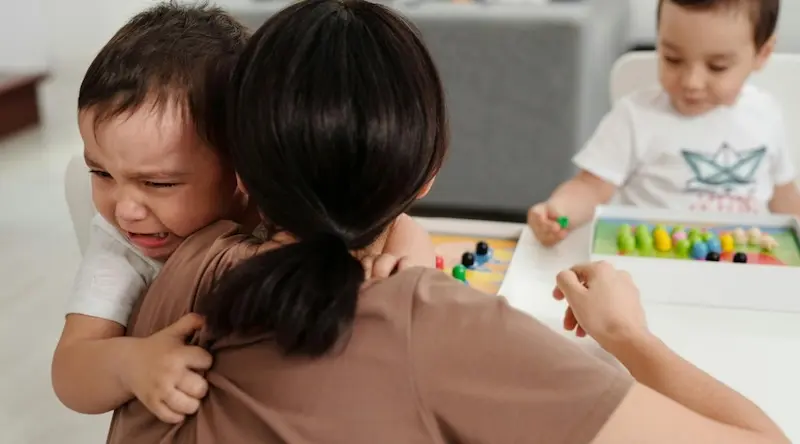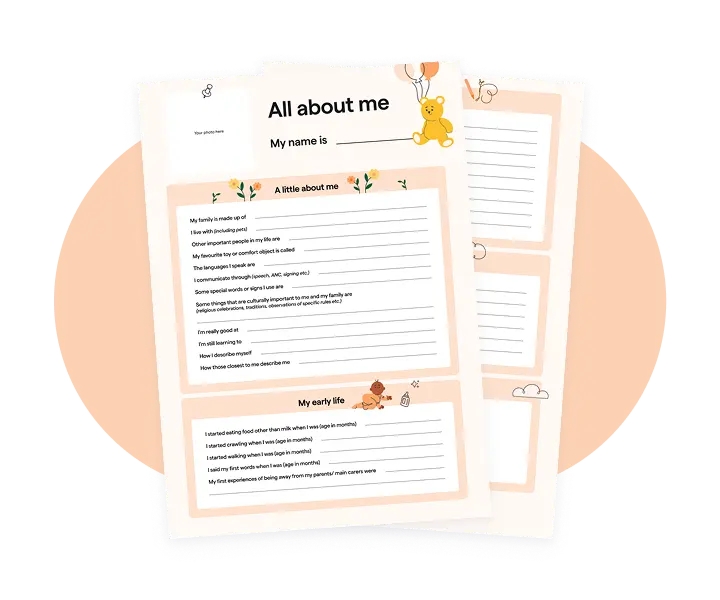settings
children
With Famly since
Just because poor behaviour, or a child becoming dysregulated, might not be directly our fault, it doesn’t mean we shouldn’t think about how we contribute to it. If we reflect honestly and openly, we give ourselves the power to change how we might react in the future.
If we are willing to think about our potential role in the problem, we can understand our potential role in the solution. Think about how you can make a difference to outcomes – put simply, focus on what you can change.

How role-modelling can support children to manage their feelings and behaviour
As educators, we know that adult behaviour does impact children’s behaviour. A child from a supportive home background is normally better at regulating their behaviour than a child from a home where the adults are confrontational and inconsistent.
When children are young, they quickly pick up on what the adults around them model. If we are rude, they learn to be rude. If we are calm and well-mannered, they learn to act in the same way.
We model behaviour all the time in our settings, and not just in terms of how we treat others. We model behaviours around learning too. Do we come across as interested, curious, involved, aware, engaged? Model an interest in the world to your children, just as you model how to be kind.

Self-regulation and impulse control in positive behaviour
Self-regulation is a complex concept but put simply, it refers to the ability to regulate our own behaviours. This might be about understanding what to do when we feel angry, how to cope with not getting our own way, and how to behave in a way that keeps us safe.
Young children’s misbehaviour is often a result of poor impulse control. The child snatches a toy, hits a friend or throws a tantrum because they cannot yet regulate that impulse. Part of our role as practitioners is to help children develop the skill of self-regulation.
In order to build self-regulation, it is a good idea to encourage the children to manage their own behaviour in the early years, rather than for practitioners to try and control behaviour with systems of extrinsic rewards and consequences. Help your children learn to do the right thing in order to learn and be kind, rather than to win a reward or avoid a sanction. This will help them make better choices around behaviour as they get older.
At our setting, we do not use any external rewards or consequences. We believe that they can interfere with the children’s intrinsic motivation to learn. We think that it is better to talk about behaviour with the children to develop their understanding of it, and we maintain high staff-to-child ratios to make time for these conversations to happen.
Another way to do this is to use activities that require patience and turn-taking. Talk about emotional reactions to reassure your children that you understand how emotional impulses affect them – ‘I can see that you are angry’, ‘I can tell that you are upset’, and so on.
The big ideas

Avoiding overstimulation and promoting engagement
Poor behaviour in the early years is also often a result of overstimulation – an exciting game gets the children overwrought, and before you know it there are tears.
Children need to be exposed to situations where they learn to cope with challenges – but approach this carefully. When you set up continuous provision, consider the likely reaction of the children. Is there space for them to take time out, as well as to let off steam? Think about how the quiet children will feel, as well as the livelier ones.
Conversely, when we are fully engaged in learning, we are less likely to misbehave. If we feel bored, or disaffected, we look for other ways to channel our attention.
Generally speaking, children, young people, and adults find it easier to engage when they are hands-on with learning or when the learning links to something they already know about, and when there are multi-sensory elements to an activity.
Reflecting on an incident in an Early Years setting
1. After poor behaviour has happened, ask yourself some tricky questions about how your practice might have impacted on the children:
- Were they bored or lacking focus?
- Were they over-stimulated or over-excited?
- Was the way the provision was set out partly to blame?
- Were they adequately supervised?
- Did you miss a chance to intervene earlier on?
- Did you miss any clues or cues when the child arrived?
- Did your own situation (tiredness, stress) impact on how you handled things?
2. When something goes wrong, don’t be too quick to pass the buck. When the situation is over, and everyone is calm, think about what might have caused the incident and how you could prevent it from happening again.
3. Reflect on the layout of the space, as this is often the root cause of issues. Are there areas where poor behaviour often happens? Could you change the space around, improve the quality of your provision, or adapt the way you supervise the children?
4. Ask colleagues to observe you, and act on their feedback. Pick one area you would like to develop – for instance, tone of voice – and ask them to critique you on it.
5. When you plan an area of provision, think about how you would feel about it as a learner. Would it engage you? What would you learn from it? What might go wrong?
6. When faced with tricky behaviour, instinctively we tend to become defensive and overreact. Counteract your instinctive responses by taking a deep breath before you intervene. Take a moment to reflect on the best reaction, rather than letting your emotions take hold.
7. Consider the boundaries you set. If you are clear with the children where the ‘line’ on behaviour is, then they will be in a much better position to stick to it. Have a clear set of agreed boundaries in your setting, sharing these and talking about them with the children. Keep your rules short and simple, and create a display so that you can refer to it regularly.
8. Reflect on emotional responses and encourage children to join in with discussions about behaviour in the early years, and to reflect on how their behaviour makes other people feel. This helps to build their sense of empathy, which in turn supports them in developing self-regulation. You might ask questions like: “How do you think Sally felt when you took the toy from her?”
9. Acknowledge the child's feelings. As well as talking about the impact of behaviour on others, it is also useful to examine what the child is feeling. Use phrases such as “I can see you are upset” or “I can tell that you are angry”. By acknowledging the child’s emotions, you help them understand that it is okay to feel this way and that it is possible to bring our emotional responses under control by regulating them ourselves.
10. Support non-verbal communication. The great thing about non-verbal signals is that they bypass the need for verbal understanding, and so they are especially useful with pre-verbal children or those who have English as an additional language.
A quick frown at a child who is about to do something they shouldn’t may be more than enough to stop them. A smile at a child who is listening well can be sufficient to reinforce the fact that these are the behaviours you want to see.
Try learning journals for free
Add observations, and build digital learning journals to share with families instantly. All with your completely free 14-day trial.
Get started









